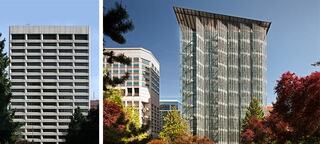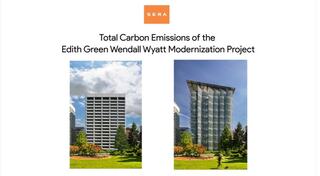Combating climate change: A study of embodied carbon

The design and construction industry has spent two decades promoting net-zero energy buildings by combining operational energy efficiency and onsite renewable energy generation, but now the goalposts are shifting.
There is a growing awareness that buildings generate massive amounts of carbon through “embodied carbon” emissions during construction, creating huge spikes in carbon emissions and undercutting our efforts to reach 2030 climate goals established at the Paris Agreement.
The video below illustrates how embodied carbon emissions were avoided during the ambitious redesign of the Edith Green—Wendell Wyatt Federal Building, an 18-story office tower built in 1974 and fully modernized in 2013. SERA’s retrospective study shows that by reusing the building’s foundation and superstructure, 53 percent of the new construction embodied carbon emissions were avoided.
To take a deeper dive into the findings of this case study, view our course at AIAU, the American Institute of Architects online education center.



